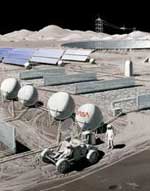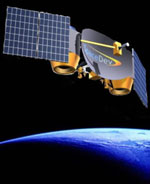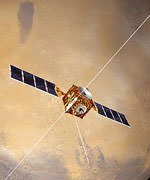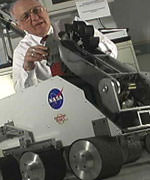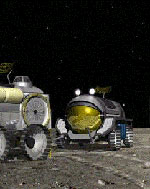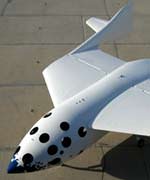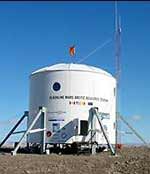
Image credit: Mars Society
Defiance, detachment, disagreement ? harmful emotions in any small group situation, but in Outer Space these feelings are particularly damaging and possibly life endangering.
ANU psychologists are preparing to gather unique insights into the duress of space travel as part of a ?Mars expedition? to be staged in the Australian desert later this year.
The way that small groups of astronauts interact in the extreme, unfamiliar and isolating conditions of space travel will be closely scrutinised by Dr Rachael Eggins, Dr Kate Reynolds and PhD student Mr Phill Krins, from the Psychology Department in the ANU Faculty of Science.
The researchers are set to record the interactions of participants of an expedition into the South Australian outback in August organised by the Mars Society of Australia. This follows on from an initial study of participants in a planetary simulation in the United States last year.
?The rigorous personality testing astronauts undergo in their relatively cosy, comfortable labs can not measure how their personality might change in a confined, socially stifling and unfamiliar space,? Dr Eggins says.
?In everyday life we are very socially dynamic and belong to a number of groups, such as family, work and friends. There are a number of psychological advantages to having such a dynamic social environment, which will be absent when people spend long periods of time in isolation.?
Mr Krins and Dr Steve Dawson, a research psychologist with the Mars Society of Australia, will travel into the desert with the expedition and ask participants ? who try and replicate as closely as possible what it would be like living and working on Mars ? to complete questionnaires designed to monitor social dynamics.
Participants will undergo a daily cortisol (a hormone produced by the body in reaction to stress) measurement test and cognitive testing to gauge stress and performance levels.
Mr Krins will also keep a daily journal to record important social events, such as leadership changes, likely to affect the social dynamics of the expedition.
?One thing we are interested in is the question of whether or not groups are good or bad for your health,? Dr Eggins says. ?We know that in cohesive groups people perform better, work harder and are more cooperative than in loose-knit groups.
?But do cohesive groups make us work too hard and what does that do to our stress levels??
There are also other issues relating to the wrong sort of cohesion in a group, and small sub-groups forming within larger groups.
?There is a danger groups may become too cohesive,? Mr Krins says.
?When this occurs there may be intense pressure for individual crew members to behave in accordance with ?group norms?. For example, if there is a group norm to not report safety breaches, this could put the entire crew in danger.?
Also, past research on groups (whether isolated or not) has shown that it is common for the larger group to splinter into smaller subgroups.
?A number of problems can occur when large groups split off into these smaller groups,? Dr Eggins says. ?Polarisation can lead to infighting and poor decision-making.
?But there are advantages ? subgroups can become an important source of creative new ideas benefiting the larger group. Subgroups are also an important source of identity and pride for people. They then work hard to achieve its goals, improving the mission as a whole.?
With unmanned Mars missions underway and intensifying research interest in the red planet, the ANU researchers believe the human element of space exploration should be taken just as seriously as the technological or scientific. The team?s research will focus on developing guiding principles to avoid problems associated with groups in such stressful circumstances.
?It is important that group differences are managed properly and don?t become a source of conflict or feelings of disenfranchisement,? Dr Eggins says.
?These principles will ensure that individuals maintain commitment to the whole, have avenues for input into decision making and follow leadership guidelines.?
Original Source: ANU News Release

